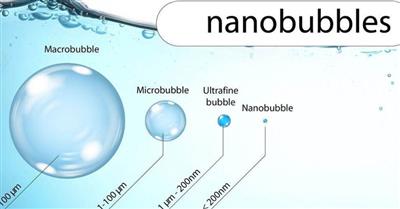
The U.S sets landmark standard to curb ‘forever chemicals’ in drinking water
11/04/2024TN&MTOn April 10th, the U.S. Environmental Protection Agency (EPA) unveiled its inaugural drinking water standard to combat "forever chemicals," alongside a $1 billion fund allocated to states for testing public water systems. This move marks the EPA's first significant step in regulating and limiting PFAS, or "forever chemicals," known for their link to cancer and other health risks in water supplies nationwide.

The new rule is anticipated to affect 6-10% of the 66,000 public drinking water systems in the US, reducing exposure to PFAS for approximately 100 million people.
Overview of the new regulation's features
According to Reuters, the new EPA rule establishes specific limits for five individual PFAS chemicals: PFOA, PFOS, PFNA, PFHxS, and HFPO-DA, commonly known as "forever chemicals." Public water systems are required to conduct monitoring for these chemicals within three years and disclose the levels of PFAS detected in drinking water to the public. If PFAS levels exceed the set standards, water systems must install reduction systems within five years.
Approximately 10% of the 66,000 public drinking water systems in the US are expected to be affected by these regulations. They have until 2027 to complete initial monitoring and report contamination levels, with a deadline of 2029 to implement necessary solutions.
EPA Administrator Michael Regan highlighted the significant impact of the new standards, estimating that they will reduce PFAS exposure for approximately 100 million people, thereby preventing thousands of deaths and tens of thousands of serious illnesses. The EPA aims to entirely eliminate PFOA and PFOS from water, setting a stringent cap of 4 parts per trillion for these chemicals. Other PFAS chemicals have slightly higher limits.
Additionally, $1 billion in funding has been allocated by the US government to support states, territories, and communities in implementing PFAS testing, treatment, and addressing contamination in both public water systems and private wells. This funding is part of a broader $9 billion investment over five years to address PFAS and other contaminant pollution.
Why the need for new legislation?
A U.S. Geological Survey study conducted last year found that nearly half of tap water samples in the United States contain PFAS. Based on an investigation by USA TODAY, data released by the EPA last month from an ongoing five-year review of water systems across the country revealed that at least 70 million Americans receive their water from systems with elevated levels of PFAS, necessitating reporting to the agency. Out of approximately 3,800 water systems assessed, 1,245 were found to have levels of at least one of these toxic chemicals requiring reporting. These systems included those in major urban areas such as Salt Lake City, Sacramento, California, Madison, Wisconsin, and Louisville, Kentucky.
PFAS, or per- and polyfluoroalkyl substances, are highly durable chemicals found in a wide array of products, including non-stick cookware, firefighting foam, and water-resistant packaging.
Efforts to regulate PFAS have recently gained momentum, although concerns about their safety have persisted for decades. These chemicals have the ability to seep into the soil surrounding manufacturing facilities and contaminate nearby water sources, posing significant risks due to their high mobility and toxicity. Some PFAS, such as PFHxS, are eliminated from the body at a much slower rate compared to others, taking eight years or more.
Studies have shown that even at low concentrations in drinking water, certain PFAS compounds can adversely affect various bodily systems. They have been linked to diseases such as kidney, testicular, and breast cancer, as well as fetal development issues. Additionally, some PFAS can suppress the body's immune response, increasing vulnerability to diseases.
Although countries like Canada and the European Union have established limits on PFAS, enforcement of these regulations has not always been effective. Research published in the journal Nature Geoscience has revealed that PFAS levels in surface and groundwater often exceed the limits set by various countries worldwide. Despite widespread violations, researchers assert that regulations are enforceable, although they vary in stringency across different nations.
Ngoc Huyen (Reuters, USA Today, Time)
















